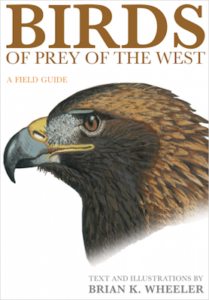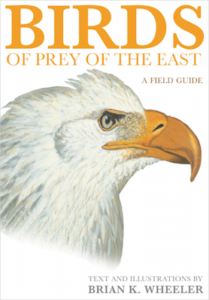 Even the most general of naturalists has favorites; creatures, plants, rocks, etc. that he or she takes a particular interest in whenever afield. For many, birds of prey can be found prominently positioned in such rankings. Not for me, however; I’ve long been the one who seems not able to show quite sufficient interest whenever an eagle soars overhead or a falcon makes a stoop.
Even the most general of naturalists has favorites; creatures, plants, rocks, etc. that he or she takes a particular interest in whenever afield. For many, birds of prey can be found prominently positioned in such rankings. Not for me, however; I’ve long been the one who seems not able to show quite sufficient interest whenever an eagle soars overhead or a falcon makes a stoop.
Part of this has to do with the specialty field guides that have been devoted to their identification. A self-taught naturalist, I’ve never found poring over endless photographs of these birds – usually photographed at far to great a distance – all that helpful. And even though I’ve stood beside such birding luminaries as Pete Dunne and Kenn Kaufman while they called out the names of tiny specs in the sky based simply on said specs’ silhouettes, their arcane knowledge remained as obscure to me as polynomial equations to a pig.
However…
 Having now had the opportunity to glance through Brian K. Wheeler’s new brace of field guides to the birds of prey found in Canada, the U.S., and Northern Mexico – Birds of Prey of the East and Birds of Prey of the West – from Princeton University Press, my hopes for, and thus interest in, learning the subtleties of identifying these birds. The secret? They both are structured around the things I value most in a field guide: illustrated plates; Mr. Wheeler’s own paintings thoroughly depicting all the necessary details of every species presented. These, combined with facing page descriptions, adjacently positioned range maps, and habitat and life history overviews that are far beyond those available in more general field guides, make these new books both intuitive as well as inspiring to use.
Having now had the opportunity to glance through Brian K. Wheeler’s new brace of field guides to the birds of prey found in Canada, the U.S., and Northern Mexico – Birds of Prey of the East and Birds of Prey of the West – from Princeton University Press, my hopes for, and thus interest in, learning the subtleties of identifying these birds. The secret? They both are structured around the things I value most in a field guide: illustrated plates; Mr. Wheeler’s own paintings thoroughly depicting all the necessary details of every species presented. These, combined with facing page descriptions, adjacently positioned range maps, and habitat and life history overviews that are far beyond those available in more general field guides, make these new books both intuitive as well as inspiring to use.
If you enjoyed reading this, please consider signing up for The Well-read Naturalist's newsletter. You'll receive a helpful list of recently published reviews, short essays, and notes about books in your e-mail inbox once each fortnight.
